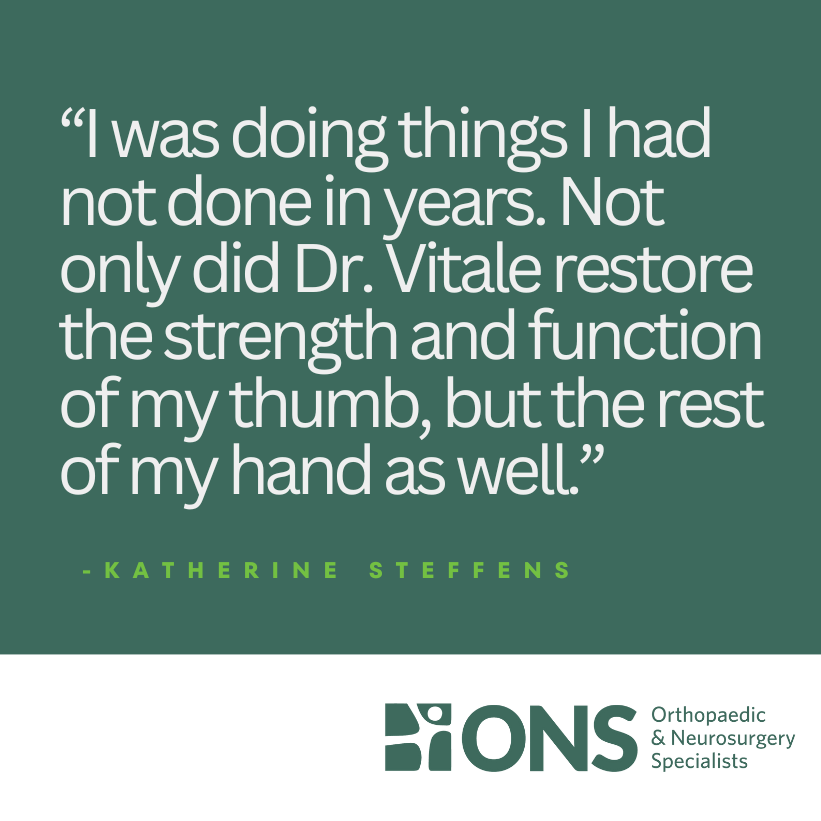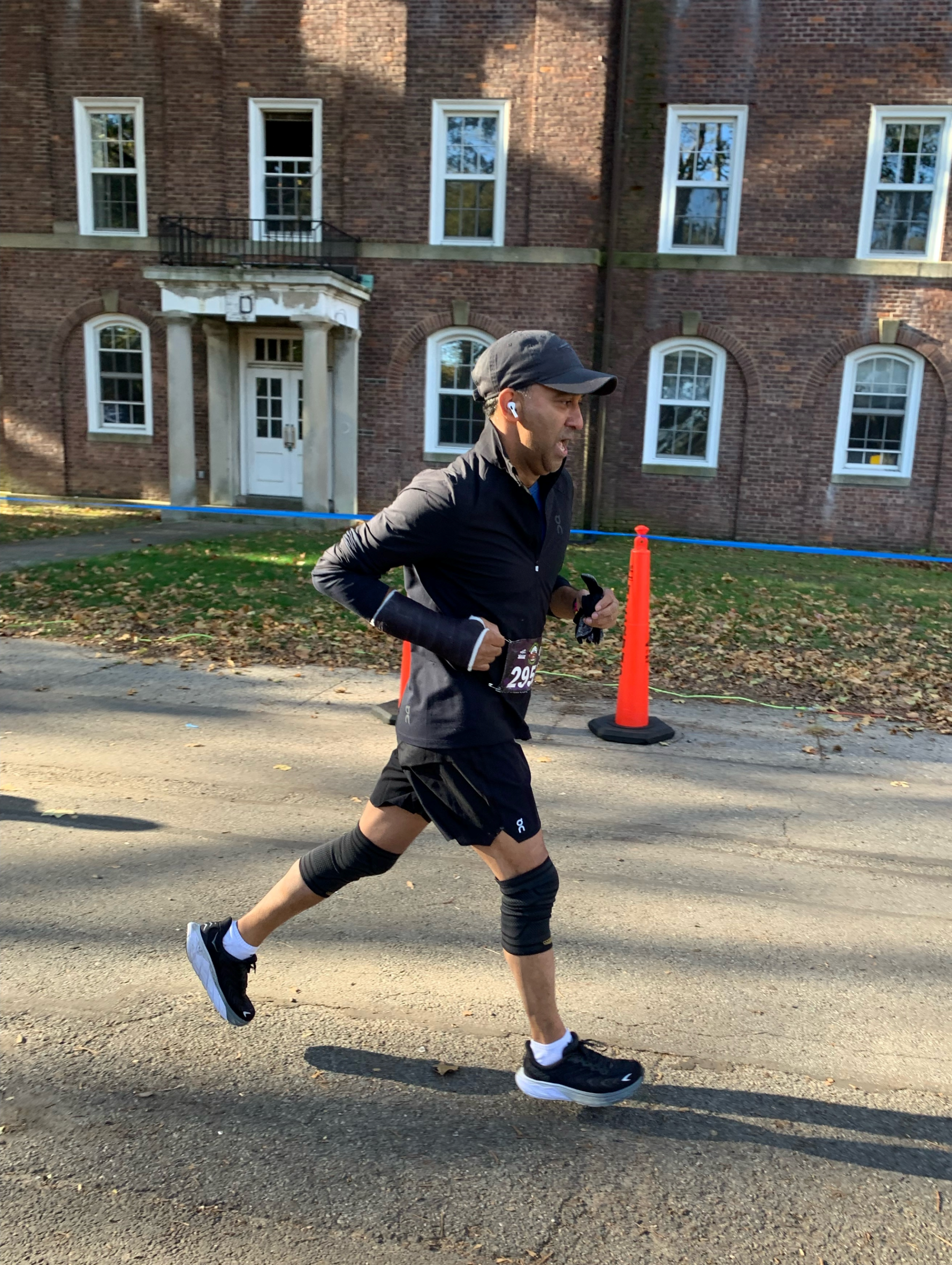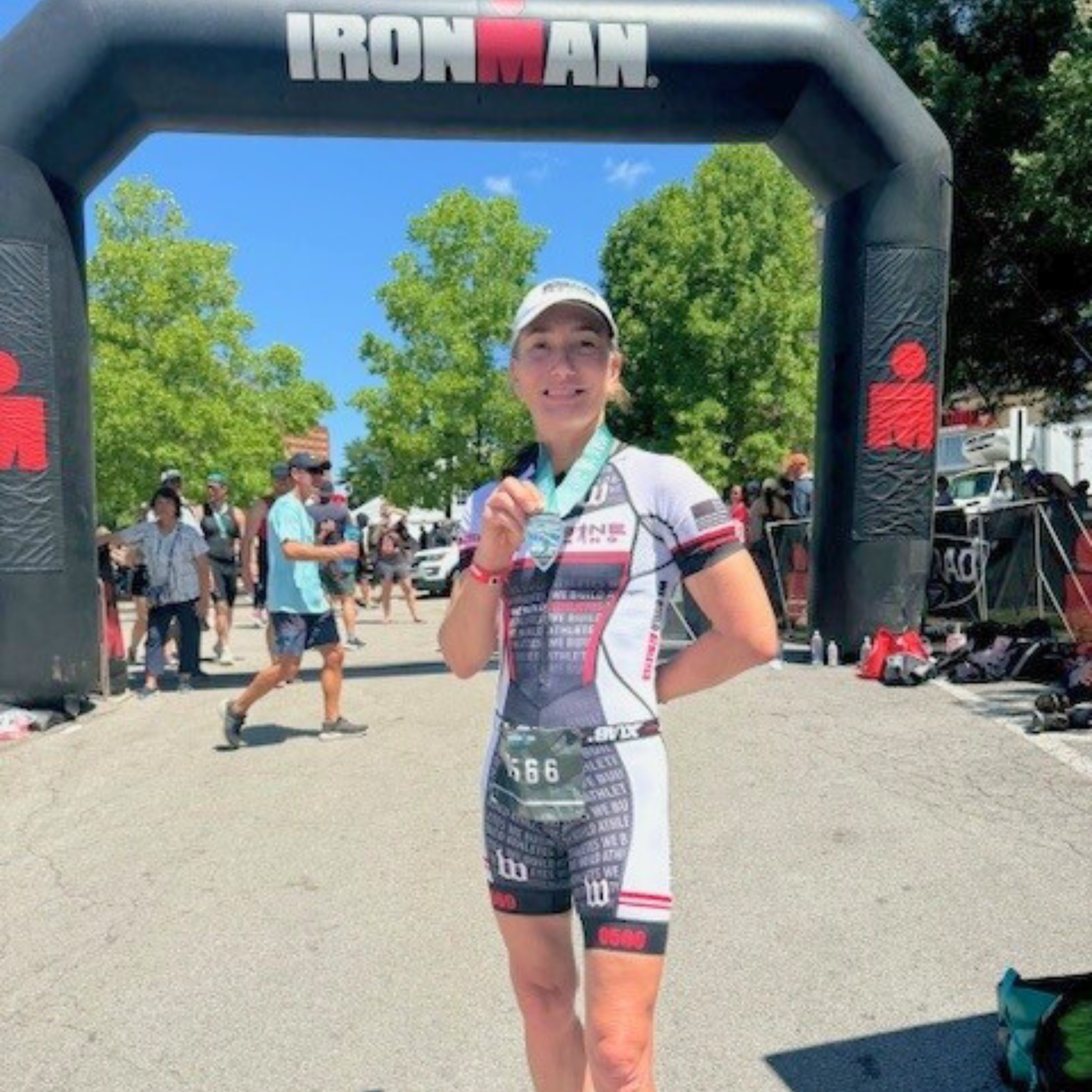
About a year ago, Ariff Quli was in a much different place than he is today. He had debilitating wrist pain from a nonhealing scaphoid fracture, which, if left untreated, can cause irreversible arthritis in the wrist. This made it difficult to pursue his passions like skiing, and even everyday tasks were painful. Ariff was told that he was not a candidate for wrist surgery due to his high A1C levels, and that his A1C levels would need to be below 7.0 before undergoing a procedure. A1C refers to a diagnostic test that measures the average amount of glucose (sugar) in your blood over the past three months. High A1C levels are associated with poorer surgical outcomes.
While Ariff was not initially cleared for surgery, he became determined to improve his health and control his diabetes (reduce his A1C levels to prediabetic levels) enough to be cleared for surgery. “I made the mental decision to get in shape, and that’s when I started running. Running was completely new to me… I began with my first mile and gradually worked my way up, setting a goal to complete my first 5K race. As time passed, my A1C levels decreased from double digits to single digits,” noted Ariff.
Ariff was referred to Dr. Mark Vitale, hand, wrist, and elbow surgeon at ONS and Chief of Orthopaedic Surgery at Greenwich Hospital, and Nicole Scherf, physician assistant at ONS, after his previous physician had left the practice.
“Dr. Vitale and Nicole Scherf were incredible. They provided unwavering support, being present with me throughout the challenges I faced with my wrist and my mission to reduce my A1C levels… I called them ‘Team Ariff’, because I truly felt they were on my side. Dr. Vitale understood the difficulties of managing diabetes, and when I shared my goal of becoming pre-diabetic, he believed in me and provided the support I needed to motivate me even more. Once my A1C levels reached a reasonable and consistent 7.0, I was finally eligible for surgery and Dr. Vitale agreed to operate on my wrist,” explained Ariff.
One month after his wrist operation, Ariff ran his first 10K race at Governors Island, even with his wrist in a cast. “My wrist showed daily improvement, and today I have full capacity and mobility. Dr. Vitale inspired me to push myself further, and I successfully completed The Ted Corbitt 15K race in December. With belief in myself, my body, and my wrist, I decided to take on a greater challenge and signed up for a half marathon. While that could have been a great ending, there is more to the story,” noted Ariff.
“During my half marathon training, when I was running five miles, I experienced slight chest pain towards the end of my run. Nevertheless, I continued jogging until the end, returned home, and drank water. After resting for a day, I resumed training and I set out to run a 5K. Unfortunately, the chest pain resurfaced during this run as well. After numerous tests, I was informed that without a bypass, I’d experience a catastrophic cardiac event within 18 months or less. Looking back, the key contributors were my bad family genetics, a poor diet as well as my previous smoking habits and lack of exercise. I didn’t have a heart attack; I was given a gift, a warning that my two arteries had severe blockage, one of them being my left anterior descending (LAD) artery, otherwise known as the widow-maker.
11 weeks after my bypass surgery, I ran my first 5K, albeit slowly, but I finished it. As I completed my 42-minute 5K run, I could not help but think of the people who inspired me—my wife, Elizabeth, my kids, Samina & Taleem, my amazing niece, Dr. Imaan Chowbhury, and, of course, Team Ariff: Dr. Vitale and Nicole Scherf. They were the ripple that turned into a wave. If they hadn’t believed in me, I wouldn’t have had the motivation to keep running, and if I had given up, well… Thank you, Dr. Vitale. You saved my life,” said Ariff.









